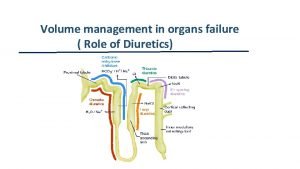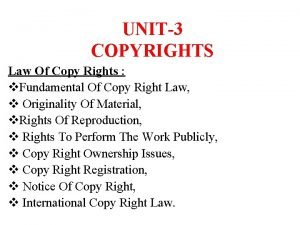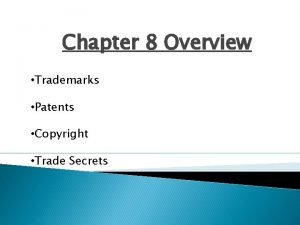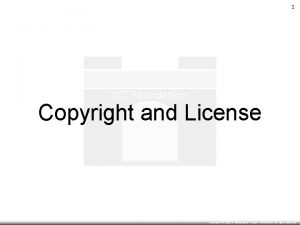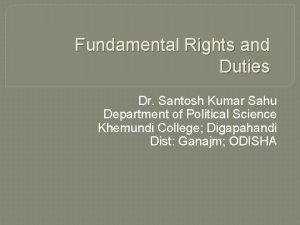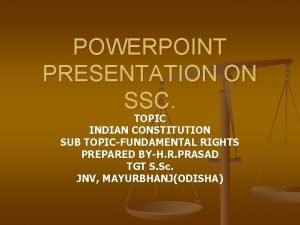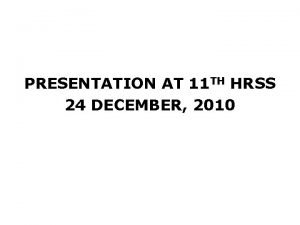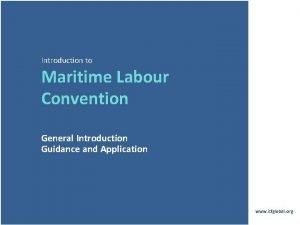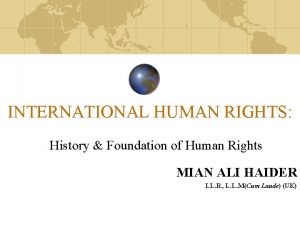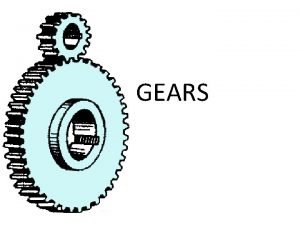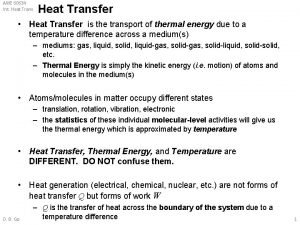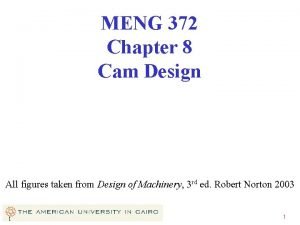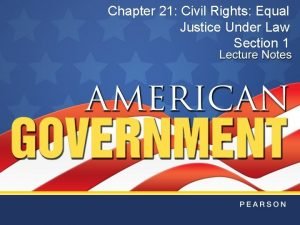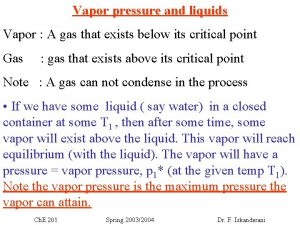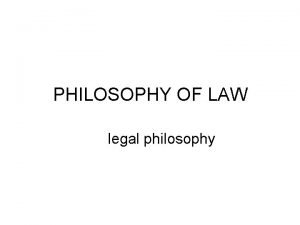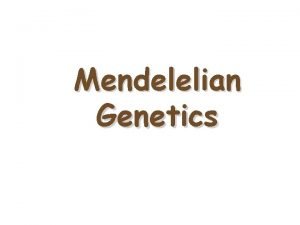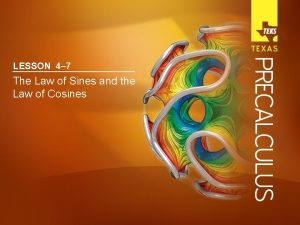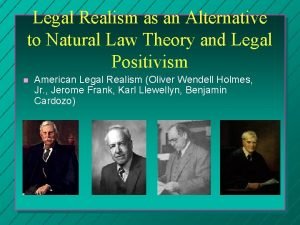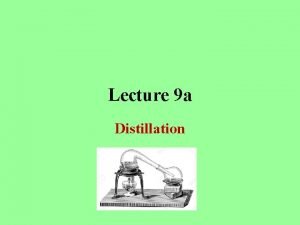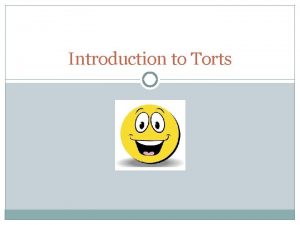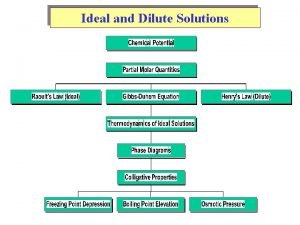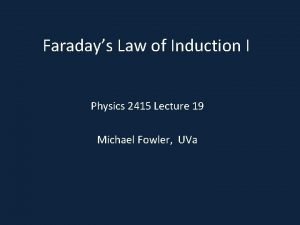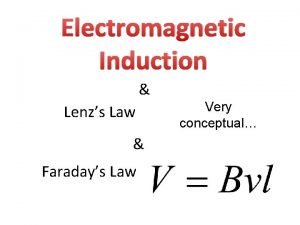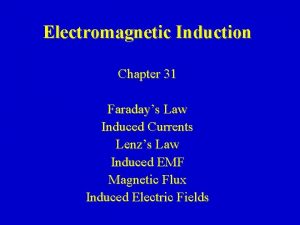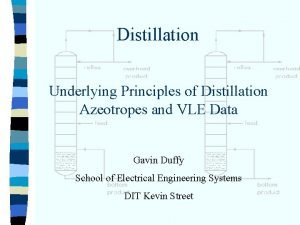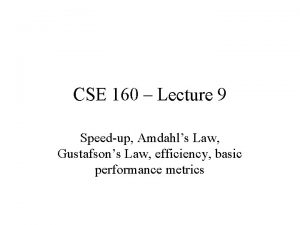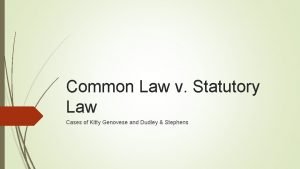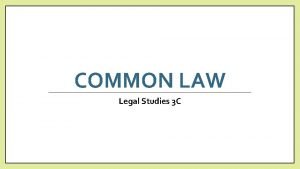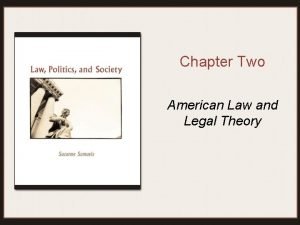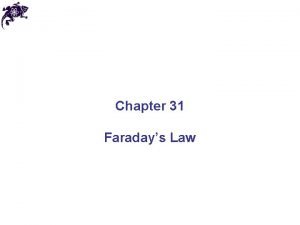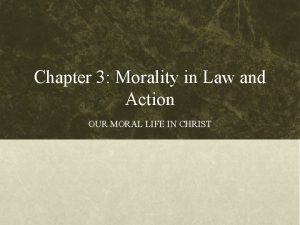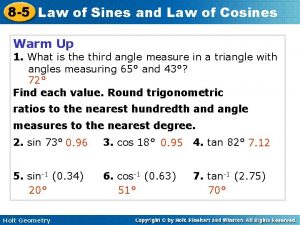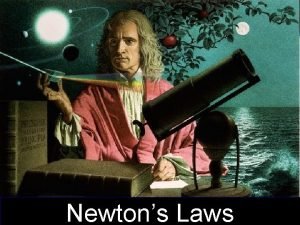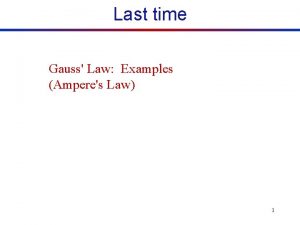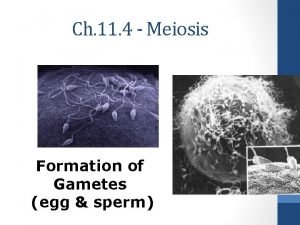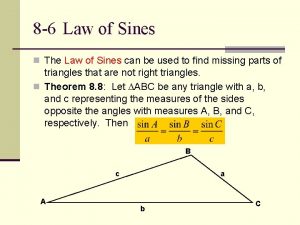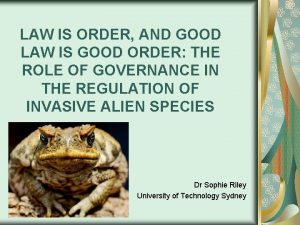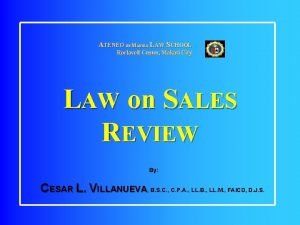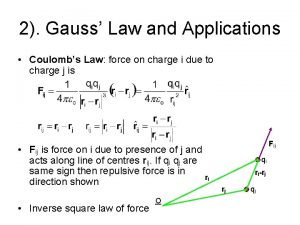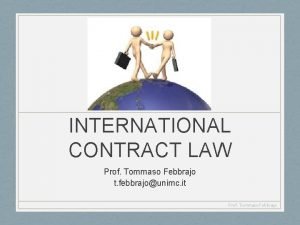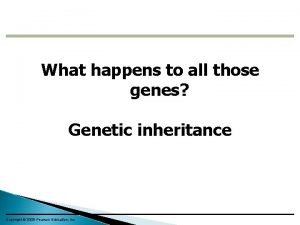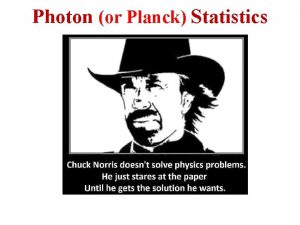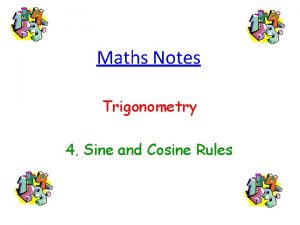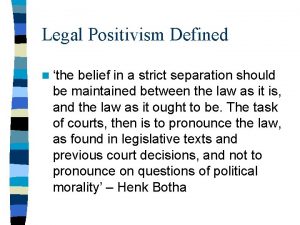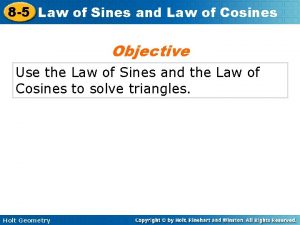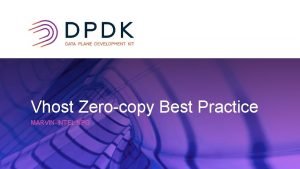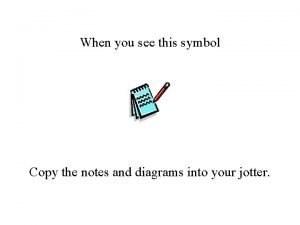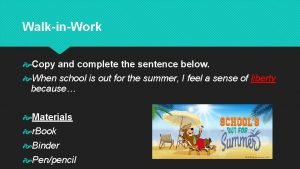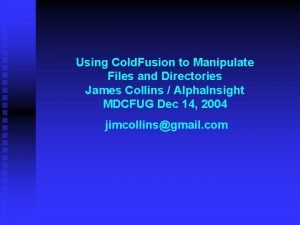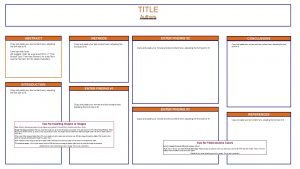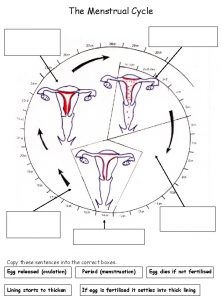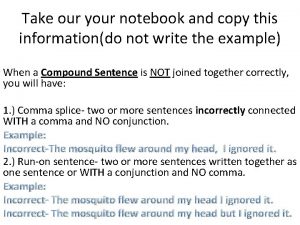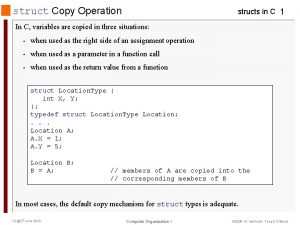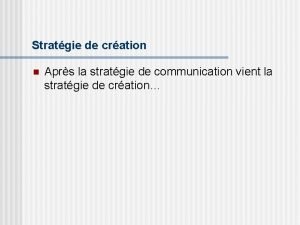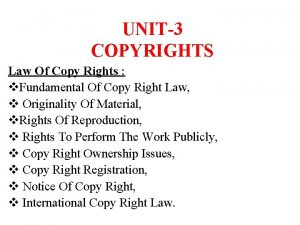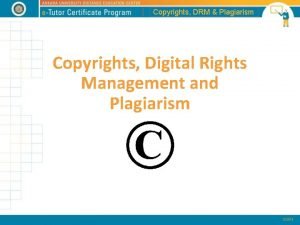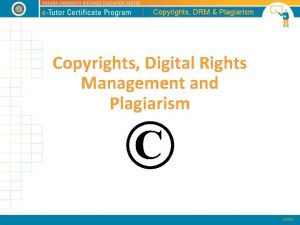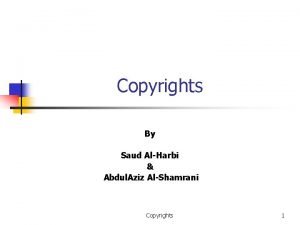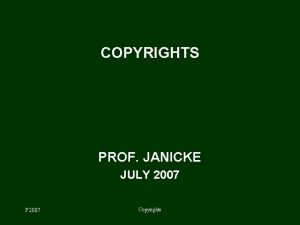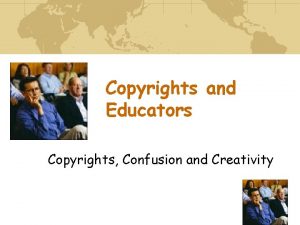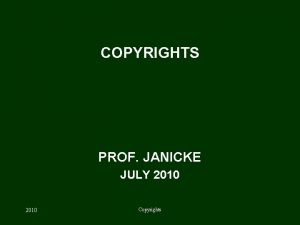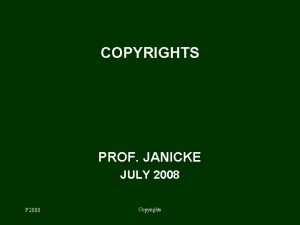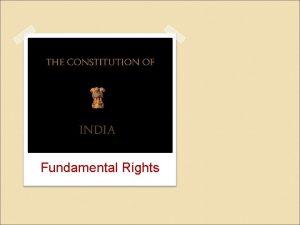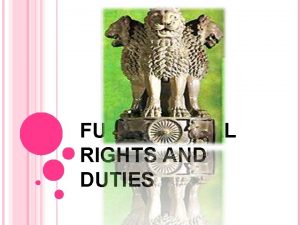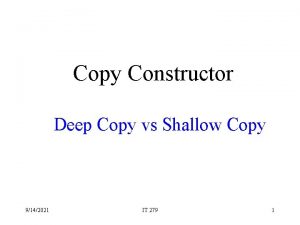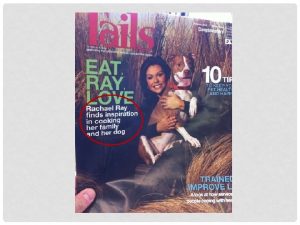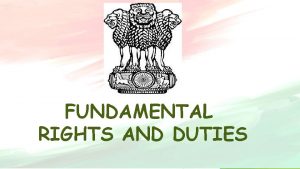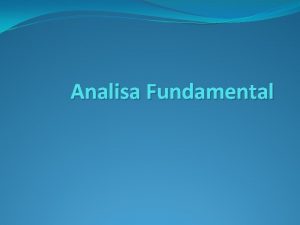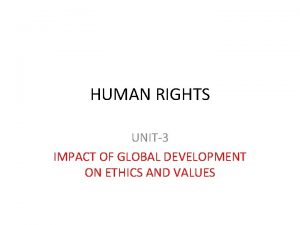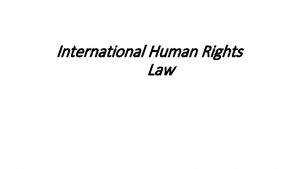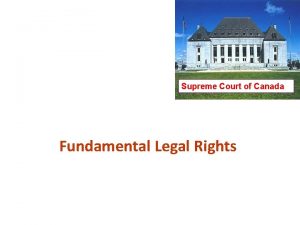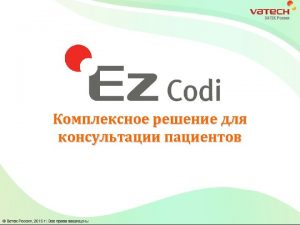UNIT3 COPYRIGHTS Law Of Copy Rights v Fundamental

















![Originality of Material • The limits of copyrightability are dictated [command] by federal statute Originality of Material • The limits of copyrightability are dictated [command] by federal statute](https://slidetodoc.com/presentation_image/a024f2ce2d54c37d79fc37873d7a4388/image-18.jpg)














![Rights to perform the work publicly • Section 106 [5] of the Copyright Act Rights to perform the work publicly • Section 106 [5] of the Copyright Act](https://slidetodoc.com/presentation_image/a024f2ce2d54c37d79fc37873d7a4388/image-33.jpg)
![Copyright Ownership Issues [17 U. S. C. § 201(a)] • Copyright in a work Copyright Ownership Issues [17 U. S. C. § 201(a)] • Copyright in a work](https://slidetodoc.com/presentation_image/a024f2ce2d54c37d79fc37873d7a4388/image-34.jpg)
![Joint Works [intent to create a unitary whole] • A joint work is a Joint Works [intent to create a unitary whole] • A joint work is a](https://slidetodoc.com/presentation_image/a024f2ce2d54c37d79fc37873d7a4388/image-35.jpg)











































- Slides: 78

UNIT-3 COPYRIGHTS Law Of Copy Rights : v. Fundamental Of Copy Right Law, v Originality Of Material, v. Rights Of Reproduction, v Rights To Perform The Work Publicly, v Copy Right Ownership Issues, v Copy Right Registration, v Notice Of Copy Right, v International Copy Right Law.

Law Of Patents : • Foundation Of Patent Law, • Patent Searching Process, • Ownership Rights And Transfer

Introduction • Every year millions of Americans create original works like books, music, research and other forms of creative expression. • All these creation are Intellectual Property and all of them are protected by copyright. Writers, editors and publishers, understanding copyrights issues are essential. • Especially now that the production of counterfeit [imitating] and pirated goods, including written works, has become so prevalent.

• In 2005 more than $600 billion in pirated and counterfeited goods were recognized by WCO [World Customs Organization]. • Now-a-days the internet has made copying and distributing protected material easier than ever before for avoiding copying the material. • So, in order to protect yourself from IP theft, it’s important to know the basics about rights.

Definition • The legal protection given to published works forbidding anyone but the author from publishing or selling them. An author can transfer the copyright to another person or corporation, such as a publishing company. ” What is a Copyright? • Copyright is a form of protection provided by U. S. Law to the authors of “Original Works of Authorship” fixed in any tangible medium of expression.

• The manner and medium of fixation are virtually unlimited. • Creative expression may be captured in words, number, notes, sounds, pictures or any other graphic or symbolic media. • The subject matter of copyright is extremely broad, including literary, dramatic, musical, artistic, audiovisual and architectural works. • Copyright protection is available for both published and unpublished works.

History • In England prompted the first insistence upon protection for publication of books • Bookbinders and printers demanded protection from copying of books. • Authors also began to demand protection from unauthorized copying and demanded to share in the financial rewards • Finally, in 1710, parliament enacted the first copyright statute [Act/law], the Statute of Anne [Named after Anne, Queen of Great Britain, the Statute become the foundation for British and American Copyright Law]

• The first copyright law is enacted under the new U. S. Constitution, Protecting books maps and charts for 14 years with privilege of renewal for another 14 years • Copy right registration is made in the U. S. district court where the author or proprietor resides. • The first copyright entry, “The Philadelphia Spelling Book” by John Barry, is registered in U. S. District court of Pennsylvania. Protection is for 14 years with a renewal period of author 14 years

Common Law Right • The enacted the first copyright act in 1790 and the first federal copyright registration were issued. • Until January 1, 1978 [the effective date of the 1976 copyright Act] the U. S had a dual system of copyright protection. • Until 1978, an author has a perpetual common law right to their unpublished works.

• Once the work was published, however, the common law perpetual copyright was extinguished and protection was afforded by virtue [quality] of the 1909 act, provide protection up to fifty-six years. • Publication is the distribution of copies of a work to the public for sale or other transfer of ownership, by rental lease, or lending

• The dual nature of copyright protection was complex, often led to controversy • The 1976 act eliminated the distinction between unpublished and published works. • For Example: Ernest Heming way’s a farewell to Arms [Published in 1929], are governed by the act in existence on the date of their publication. Heingway’s book would thus be governed by the 1909 act. v. Just as trademark rights arise from use and not from registration with PTO.

• A copyright registration from the copyright office provides certain advantages to author’s of work, including the following. ü Registration establishes a public record of the copyright claim ü Before an infringement suit may be filed in court, registration is necessary for works of U. S origin ü If made before or within five years of publication, registration will establish Primafacie evidence in court of the validity of the copyright and of the facts stated in the certificate and

• If registration is made within three months after publication of the work or prior to an infringement of the work, statutory damages and attorney’s fee will be available to the copyright owner in court action. v. Copyright protection generally lasts until seventy years from the death of the author. v. The 1976 copyright act is found at 17 U. S. C. §§ 101 -1101 and it was amended for several times. v. In 1980, specific protection was afforded to computer programs as works entitled to copyright protection.

• Copyright Act © represents • Another 1998 amendment to copyright law is the Digital Millennium Copyright act. The United States Copyright Office: Register of Copyright, Copyrights office, Library of Congress, 101 Independence Avenue SE, Washington, DC 20559 -6000

• The copyright office is not permitted to give legal advice and will not offer guidance on matter such as disputes, suits against possible infringers or other matters related to copyright. • Among the more useful publications and materials are the following: ü Forms for copyright registration ü Circular 1, “Copyright Basics”, ü Circular 2, “Publication on copyrights”, ü Circular 3, “Copyright Notice”, ü Circular 4, “Copyright Fees”

ü Circular 15, “Renewal of Copyright” ü Circular 15 a, “Duration of Copyright”; and ü Circular 38 a, “International copyright Relations of the United States”; and ü Circular 61, “Copyright Registration for computer Programs” To order copyright publications, write to: Library of Congress, Copyright Office, Publication section, LM-455, 101 Independence Avenue SE, Washington-DC 20559 -6000

• Circulars and announcements are available via facsimile • If you do not know the document number of the items you want, you may request that a menu be faxed to you • All the data pertaining to copyrights are available in Internet • The copyright office provides a free electronic mailing list, “News. Net”, that issues periodic email messages on copyright issues • Copyright office process the application via electronically.
![Originality of Material The limits of copyrightability are dictated command by federal statute Originality of Material • The limits of copyrightability are dictated [command] by federal statute](https://slidetodoc.com/presentation_image/a024f2ce2d54c37d79fc37873d7a4388/image-18.jpg)
Originality of Material • The limits of copyrightability are dictated [command] by federal statute • According to 17 U. S. C § 102, copyright protection exists in original works [tangible medium]. • Thus, there are three basic requirements for copyrightability: 1. A work must be original 2. A work must be fixed in a tangible form of expression; and 3. A work must be a work of authorship

To be eligible for copyright protection q Material must be original q Meaning q Independently created q Posses a modicum of creativity q It should not confused with novelty, worthiness or aesthetic [dealing with beauty] appeal v“Originality” thus does not mean “first”, it merely means “independently created”, v A slight amount of “creative spark”

Fixation of Material : (17 U. S. C. § 101) • The copyright act protects works of authorship that are “fixed in any tangible medium of expression”. • A work is “fixed”: ü When it is embodied [existing in broad form] ü Phonorecord and is sufficiently permanent ü Stable to permit it to be perceived, reproduced or communicated for a period of more than transistory [temporary] duration

• Thus there are two tangible categories ü Copies: A copy is a material object from which a work can be perceived, reproduced or communicated, either directly by human perception or with the help of a machine. ü Phonorecord: A Phonorecord is a material object in which sounds are fixed and from which the sounds can be perceived, reproduced or communicated either directly by human perception or with the help of a machine.

Works of Authorship: (17 U. S. C § 102) • The copyright act provides that copyright protection subsists [support oneself] in original works of authorship fixed in any tangible medium of expression, now known or hereafter developed, from which they can be perceived, reproduced or otherwise communicated. • The list is preceded by the phrase that works of authorship “include” those categories, demonstrating that the listed categories are not only types of works that can be protected, but are illustrate only

ü Literary works ü Musical works ü Dramatic works ü Pantomimes and choreographic works ü Pictorial, graphic and sculptural works ü Motion pictures and other audiovisual works ü Sound recording and ü Architectural works

Exclusions from copyright protection: Not all works are protected by copyright ü Ideas, Methods, or System ü Blank forms, Titles, short phrases and common property ü Public domain works ü Facts ü Computing and measuring devices

The Rights afforded by copyright law Introduction • The copyright act provides that, subject to certain exceptions, the owner of a copyrights has the exclusive rights to do and to authorize any of the following: ü To reproduce the copyrighted work in copies or phonorecords ü To prepare derivative works based on the copyrighted work ü To distribute copies or phonorecords of the copyrighted work to the public

ü To perform the copyrighted work publicly ü To display the copyrighted work publicly ü To perform the copyrighted work publicly by means of a digital audio transmission ü Unless exemption exists, unauthorized exercise of any of these rights by another is an infringement. ü These exclusive rights, usually referred to as a “bundle”

Rights of Reproduction • The most fundamental of the rights granted to copyright owners is the right to reproduce the Work • A violation of the copyright act occurs whether or not the violator profits by the reproduction • Only the owner has the right to reproduce the work • Secretly taping a concert, taking pictures at a performance, or recording all violate the owner’s right to reproduce

• The suggestion of congress, in 1978 a group of authors, publishers and users established a not-for -profit entity called Copyright Clearance Center [CCC] • CCC grants licenses to academic, government and corporate users to copy and distribute the works • It collects royalty fees, which are distributed to the authors • Companies that photocopy articles from journals and magazines often enter into licensing arrangements with the CCC so they can make copies.

• Rights to prepare Derivative works: v Section 106 of the copyright Act provides that the owner of a copyright has the exclusive right to prepare derivative works based upon the copyrighted work v. This right I often referred to as the right to adapt the original work Definition: • A derivative work is broadly defined as a work based upon one or more preexisting works, such as a translation, dramatization, fictionalized motion pictures version, abridgment condensation or any other from in which a work may be recast, transformed, or adapted.

• a work consisting of editorial revisions, annotations, elaborations, or other modifications is also a derivative work • New material represents original work of authorship.

Rights of distribution and the first sale doctrine • Section 106 (3) of the copyright act provides that the owner of a copyright has the exclusive right to distribute copies or phonorecords of the work to the public by sale or other transfer of ownership • A violation of the distribution right can arise solely from the act of distribution itself • The distributor did not make an unlawful copy or the copy being distributed was unauthorized

• Thus, blockbuster video store can be liable for violating an owner’s right to distribute • Once the author has parted with ownership of copyrighted material, the new owner of a lawfully made copy can treat the object as his or her own. • The new owner the right to lend the book or movie to a friend, resell the work at a garage sale, or even destroy it. • The first sale doctrine does not apply to or limit the author’s exclusive rights to prepare derivative works or rights of public performance and • Without permission of authorship the goods are not permitted to imported into the U. S.
![Rights to perform the work publicly Section 106 5 of the Copyright Act Rights to perform the work publicly • Section 106 [5] of the Copyright Act](https://slidetodoc.com/presentation_image/a024f2ce2d54c37d79fc37873d7a4388/image-33.jpg)
Rights to perform the work publicly • Section 106 [5] of the Copyright Act provided that q in the case of all copyrighted works other than sound recording & works of architecture, the copyright owner has the exclusive right to display the work publicly. q A display is “public” under the same circumstances in which a performance is “public”. q Namely if it occurs at a place open to the public (or) at a place where a substantial number of persons outside of the normal circle of a family.
![Copyright Ownership Issues 17 U S C 201a Copyright in a work Copyright Ownership Issues [17 U. S. C. § 201(a)] • Copyright in a work](https://slidetodoc.com/presentation_image/a024f2ce2d54c37d79fc37873d7a4388/image-34.jpg)
Copyright Ownership Issues [17 U. S. C. § 201(a)] • Copyright in a work protected under the copyright act vests [provide with power and authority in the author or authors of the work • Issues about ownership arise when more than one person creates a work • Ownership of a physical object is separate and distinct from ownership of the copyright embodied in the material object. • Unless copyright has been explicitly conveyed with those physical articles, the original authors generally retain all other rights associated with the works.
![Joint Works intent to create a unitary whole A joint work is a Joint Works [intent to create a unitary whole] • A joint work is a](https://slidetodoc.com/presentation_image/a024f2ce2d54c37d79fc37873d7a4388/image-35.jpg)
Joint Works [intent to create a unitary whole] • A joint work is a work prepared by two or more authors with the intention that their contributions be merged into inseparable or interdependent parts of a unitary whole. • One copyright exists in the created works • Joint authors are those who “mastermind” or “super mind” the creative effort.

Ownership Rights in Joint Works • If individual are authors of a joint work, each owns an equal undivided interest in the copyright as a tenant in common, [each has the right to use the work, prepare derivative works, display it without seeking the other coauthor’s permission]. • If profits arise out of such use, an accounting must be made so, that each author shares in the benefits or proceeds. • The death of a coauthor, his or her rights pass to heirs who then own the rights in common with the other coauthor

Ownership in Derivative or Collective Works Ø The author of the original book has rights only to his or her work and cannot reproduce or perform the derivative work without permission. Ø If a work such as a book is created by one person who intends it to be complete at the time and illustrations are later added to it by another, the work cannot be a joint work because there was no intention of the parties to create a unitary whole at the time of their creation.

Ø The author of the derivative work cannot create further works based on the original book without permission and cannot reproduce the original work without permission. Ø Multiple ownership rights may also arise if separately copyrightable works are compiled into a collection. • For Example: If essays written by Jerry Seinfeld, Ellen De. Generes, and Paul Reiser are collected into a humor anthology by Bill Jones (with permission of the original authors), the original authors retain their exclusive rights (such as rights to reproduce, distribute, and perform) in their respective essays.

• No join work is created because there was no intent at the time the separate essays were created to merge them into a unitary whole. • No derivative work is created because the original works have not been transformed in any way and nothing new has been added to them • The anthology by the compiler, Bill Jones, is a collective work and pursuant to section 201(c) of the act, Jones acquires only the right to reproduce and distribute the contributions as part of the particular collective work or any revision of the collective work.

Works Made for Hire Ø The general rule is that the person who creates a work is the author of that work and the owner of the copyright therein, there is an exception to that principle: the copyright law defines a category of works called works made for hire. Ø If a work is “made for hire”, the author is considered to be the employer or commissioning party and not the employee or the actual person who created the work.

Ø The employer or commissioning party may be a company or an individual. Ø There are two types of works that are classified as works made for hire; works prepared by an employer within the scope of employment and certain categories of specially ordered or commissioned works.

Copyright Registration • A work is “created” when it is fixed in a copy or phonorecord for the first time. • Although not required to provide copyright protection for a work, registration of copyright with the Copyright Office in expensive, easy and provides several advantages, chiefly, that registration is a condition precedent for bringing an infringement suit for works of US origin.

• To register a work, the applicant must sent the following three elements to the Copyright Office: a properly completed application form, a filing fee, and a deposit of the work being registered. • Registration may be made at any time within the life of the copyright.

THE APPLICATION FOR COPYRIGHT REGISTRATION • The following persons are entitled to submit an application for registration of copyright: ü the author (either the person who actually created the work or, if the work is one made for hire, the employer or commissioning party) ü the copyright claimant (either the author or a person or organization that has obtained ownership of all of the rights under the copyright originally belonging to the author, such as a transferee)

• the owner of exclusive right, such as the transferee of any of the exclusive rights of copyright ownership (for example, one who prepares a movie based on an earlier book may file an application for the newly created derivative work, the movie); and • the duly authorized agent of the author, claimant, or owner of exclusive rights (such as an attorney, trustee, or anyone authorized to act on behalf of such parties)

Application Forms • Each form is one 8 ½ by 11” (inchs) sheet, printed front and back. • An applicant may use photocopies of forms • The Copyright Office receives more than 6, 000 applications each year, each application must use a similar format to ease the burden of examination. • The type of form used is dictated by the type of work that is the subject of copyright.

• For example: One form is used for literary works, while another is used for sound recording. Following are the forms used for copyright application. ü Form TX (Literary works, essays, poetry, textbooks, reference works, catalogs, advertising copy, compilations of information, and computer programs) ü Form PA (Pantomimes, choreographic works, operas, motion pictures andother audiovisual works, musical compositions and songs).

ü Form VA (Puzzles, greeting cards, jewelry designs, maps, original prints, photographs, posters, sculptures, drawings, architectural plans and blueprints). ü Form SR (Sound recording) ü Form SE (periodicals, newspapers magazines, newsletter, annuals and Journals. Etc. )

Notice of copyright • Since March 1, 1989 (the date of adherence by the United States to the Berne Convention), use of a notice of copyright (usually the symbol © together with the year of first publication and copyright owner’s name) is no longer mandatory, although it is recommended and offers some advantages. • Works published before January 1, 1978, are governed by the 1909 copyright Act.

• Under that act, if a work was published under the copyright owner’s authority without a proper notice of copyright, all copyright protection for that work was permanently lost in the United States. • With regard to works published between January 1, 1978, and March 1, 1989, omission of a notice was generally excused if the notice was omitted from a smaller number of copies, registration was made within five years of publication, and a reasonable effort was made to add the notice after discovery of its omission.

International Copyright Law • Developments in technology create new industries and opportunities for reproduction and dissemination of works of authorship. • A number of new issues have arisen relating to the growth of electronic publishing, distribution, and viewing of copyrighted works. • Along with new and expanded markets for works comes the ever-increasing challenge of protecting works form piracy or infringement.

ü Copyright protection for computer programs ü Copyright protection for Automated Databases ü Copyright in the Electronic Age ü The Digital Millennium Copyright Act

LAW OF PATENTS • The work Patent is a shorthand expression for “letters patent” • A Patent is a grant from the U. S. government to exclude others from making, using, or selling another person’s new, non obvious, and useful invention in the United States for the term of patent protection. • It is protected for 20 years • Under patent law, inventors can enjoin the making, using or selling of an infringing invention even if it was independently created.

• A Patent allows its owner to exclude others from using the owner’s invention; it does not provide any guarantee that the owner can sell the invention. • To obtain a patent, an inventor must file an application with the PTO, same agency of the Department of Commerce that issues trademark registration. • The application must describe the invention with specificity. • The application will be reviewed by a PTO examiner, and, if approved, the patent will issue.

• The U. S. Constitution provides that Congress shall have the power “to promote the progress of science and useful arts, by securing for limited times to authors and inventors the exclusive rights to their respective writing and discoveries”. • Patent promote the public good in that patent protection incentivizes inventors.

Advantages of Patents Ø Patents promote the public good in that patent protection incentivizes inventors Ø The introduction of new products and processes benefits society. Ø In return for the full disclosure to the public of specifies of the invention, thus advancing science and technology, the inventor is given a limited period of time within which to exploit his or her invention and excluded others from doing so. Ø Inventors are thus incentivized to create new products, and the public benefits from inventions that ultimately will fall into the public domain.

Rights Under Federal Law • Patent law derives from the Constitution. • In 1790, pursuant to the direction provided in the Constitution, Congress passed the first patent, which in large part relied upon English Law. • Three years later, the statute was replaced with a new act authored by Thomas Jefferson. • These early acts provided the structural framework for U. S patent law and specified the four basic conditions, still existing, that an invention must satisfy to secure patent protection:

ü The invention must be a utility, design, or plant patent ü It must be useful (or ornamental in the case of a design patent or distinctive in the case of a plant patent); ü It must be novel in relation to the prior art in the field; and ü It must not be obvious to a person of ordinary skill in the field.

• Revision of federal patent statutes occurred in 1836 when the Patent Office was created and again in 1870 and 1897. • Thereafter, in 1952, Congress enacted a new patent act, codified in title 35 of the United States Code (U. S. C), it is last major revision to federal patent statutes • Development of patent law has evolved primarily through federal court decisions rather that the legislature

• In 1982, Congress created a new court, the Court of Appeals for the Federal Circuit (CAFC), the exercise exclusive jurisdiction over all cases involving patent issues and to promote uniform interpretation of the U. S. patent statutes, which until then had been interpreted in often inconsistent ways by the various federal courts of appeals throughout the nation. • Moreover, some inventions such as computer programs, are protectable under copyright law as well as patent law.

Patent Searching Process The Need for a Search: ü Patentability requires novelty and nonobviousness. ü The patentability search, sometimes called a novelty search ü A search is recommended to determine the feasibility of obtaining a patent.

• A novelty search is somewhat limited in scope and is designed to disclose whether an application will be rejected on the basis of lack of novelty or obviousness. • A novelty search can usually be completed for less than $1, 000. • If an invention is intended for immediate commercial use or sale, an additional search, call an infringement search or investigation, is often conducted concurrently with the novelty search. • This novelty search is thus more expensive

Searching Methods • The PTO provides public search facilities for patent searching. • Searching is free and the PTO allows searchers to review issued patents, complete with drawings. • Searching can be done either in the main public search room or in the examiners search areas where examiners will assist in searching. (The patent search room contains copies of all U. S. issued patents from 1790 to present as well as many foreign patents).

• The PTO employs a classification system that provides for the storage and retrieval of patent documents • The patent examiners in the course of examining patent applications, the system is also used by searchers, and classification files are divided into subclasses. • Most classes have approximately three hundred sub classes

Patent Application Process Overview of the Application Process • The process of preparing, filing, and shepherding a patent application through the PTO towards issuance is called “prosecution”. • An application may be filed by the inventor himself or herself or, as is more usual, by a patent attorney. • Only 20% of all applications are filed by inventors without the assistance of attorneys.

• The application is filled with PTO, it will be assigned to one of more than 3500 patent examiners having experience in the area of technology related to the invention who will review the application and conduct a search of patent records to ensure the application complies with the statutory requirements for patents. • The process may continue for several rounds. • A Notice of Allowance will be sent to the applicant, which specifies an issue fee that must be paid to the PTO in order for the patent to be granted.

• Until 2000 all patent application were maintained in confidence, but after November 2000 they were published • It takes one to three years to prosecute a patent, and costs and fees can rangefro m $5000 to more than $30000 with fee generally ranging for $10000 to $12000.

Patent Practice • While preparing trademark and copyright applications is relatively straightforward, preparing a patent application requires skillful drafting as well as knowledge in the relevant fields, whether that is biotechnology, chemistry, mechanical engineering, physics, computers, pharmacology, electrical engineering, and so forth. • They are divided into different groups, such as a mechanical group, a biotech group, and an electrical group.

• Many patent attorneys possess both a law degree and an advanced degree in engineering, physics, chemistry, or the like. • To represent patent applicants before the PTO, an attorney must be registered to practice with the PTO. • An attorney must pass the Patent Bar, which requires the attorney to demonstrate background in science or engineering. • The examination is very difficult it is a multiple choice questions, and the pass rate tends to hover around one-third.

• A list of attorneys and agents registered to practice before the PTO is available from the Government Printing Office located in Washington, DC, Alternatively, the PTO web site (http: //www. uspto. gov/web/ofices/dcom/olia/oed /roster/) provides an index to the more than 18000 attorneys and agents who are licensed to practice before the PTO.

Confidentiality of Application Process and Publication of Patent Application • More than 200 years, all patent applications filed with the PTO were maintained in strict confidence throughout the entire application process. • Only when the patent issued was the file wrapper open to public inspection. • Under the American Inventors Protection Act (AIPA) of 1999, however, which took effect in November of 2000, the PTO now publishes utility and plant applications eighteen months after their filing

• if the applicant later decides to apply for a patent in a foreign country, the applicant must provide notice of this foreign filing to the PTO within forty-five days or the application will be regarded as abandoned. • The intent of the new law is to harmonize U. S. patent procedures with those of other countries, almost all of which publish patent applications after an initial period of confidentiality. • The new act protects inventors from having their inventions infringed by providing that patentees can obtain reasonable royalties if others make, used, or sell the invention during the period between publication and actual grant of the patent.

Types of Application 1. Provisional Application 2. Utility Application 3. Design Application 4. Plant Application 5. Continuation Application 6. PCT (Patent Cooperation Treaty) Application 7. Divisional Application

Preparing the Application Ø Title Ø Cross-references to related applications Ø Background Ø Summary of invention Ø Brief description of drawing Ø Detailed description of the invention Ø Claims

Patent Prosecution Flowchart Ownership Rights ü Patents are items of personal property and thus may be owned, sold, licensed, or devised by will. ü Applications for patent must be filed by the actual inventor of the article, process, design, or plant. ü If there is more than one inventor, the application must be signed by all inventors.

• In many instance, employees are required to sign agreements with their employers whereby they agree that any invention or discovery invented by them while on the job will belong to the employer and that they will agree to assist and cooperate in any manner, including signing applications for patents, to ensure the employer’s rights are protected. • Although the oath in the patent application is signed by the individual inventor, when the application is filed, a simultaneous assignment is also filed identifying the employer as the “true” owner of the application and the invention.

Ownership transfer • As objects of intellectual property or intangible assets, patents and patent applications may be transferred. • A transfer of patent or patent application can be the result of a financial transaction, such as an assignment, a merger, a takeover or a demerger, or the result of an operation of law, such as in an inheritance process, or in a bankruptcy.

• The rationale behind the transferability of patents and patent applications is that it enables inventors to sell their rights and to let other people manage these intellectual property assets both on the valuation and enforcement fronts. As The Economist put it, • "Patents are transferable assets, and by the early 20 th century they had made it possible to separate the person who makes an invention from the one who commercialisesit. This recognised the fact that someone who is good at coming up with ideas is not necessarily the best person to bring those ideas to market. ”.
 Image copyrights
Image copyrights Copyrights
Copyrights First sale doctrine copyright
First sale doctrine copyright Copyrights
Copyrights Copyrights
Copyrights Nature of fundamental rights
Nature of fundamental rights Fundamental consumer rights
Fundamental consumer rights Fundamental rights in indian constitution ppt
Fundamental rights in indian constitution ppt Fundamental rights definition
Fundamental rights definition Fundamental rights definition
Fundamental rights definition Human rights description
Human rights description Fundamental democratic rights
Fundamental democratic rights What are fundamental rights
What are fundamental rights Positive rights vs negative rights
Positive rights vs negative rights Littoral vs riparian rights
Littoral vs riparian rights Moral duties
Moral duties Legal rights vs moral rights
Legal rights vs moral rights Positive and negative rights
Positive and negative rights Negative right
Negative right Negative rights vs positive rights
Negative rights vs positive rights Positive rights and negative rights
Positive rights and negative rights Newton's first law and second law and third law
Newton's first law and second law and third law Newton's first law
Newton's first law Boyle's law charles law avogadro's law
Boyle's law charles law avogadro's law How to calculate boyle's law
How to calculate boyle's law Gear wheel of infinite diameter is also known as
Gear wheel of infinite diameter is also known as Fundamental law
Fundamental law Svaj diagram
Svaj diagram Chapter 21 civil rights equal justice under law
Chapter 21 civil rights equal justice under law Raoult's law and dalton's law
Raoult's law and dalton's law Difference between civil law and criminal law
Difference between civil law and criminal law Natural law vs positive law
Natural law vs positive law Principles of natural law
Principles of natural law Positive law vs natural law
Positive law vs natural law Law of segregation vs law of independent assortment
Law of segregation vs law of independent assortment 4-7 the law of sines and the law of cosines
4-7 the law of sines and the law of cosines Positive law vs natural law
Positive law vs natural law Introduction distillation
Introduction distillation Difference between civil law and criminal law
Difference between civil law and criminal law Raoult's law and dalton's law
Raoult's law and dalton's law Law of segregation vs law of independent assortment
Law of segregation vs law of independent assortment Faraday's law
Faraday's law Faraday's law vs lenz's law
Faraday's law vs lenz's law Explain faraday's law of electromagnetic induction
Explain faraday's law of electromagnetic induction Ethanol distillation temperature
Ethanol distillation temperature Gustafson's law calculator
Gustafson's law calculator Difference between statute and common law
Difference between statute and common law Difference between common law and statute law
Difference between common law and statute law Positive law vs natural law
Positive law vs natural law Faraday's law vs lenz law
Faraday's law vs lenz law Natural law vs positive law
Natural law vs positive law Private law vs public law
Private law vs public law Lesson 8-5 law of sines and cosines
Lesson 8-5 law of sines and cosines The vapor pressure of pure water at 110 c is 1070 torr
The vapor pressure of pure water at 110 c is 1070 torr Studyja
Studyja Ampere's law examples
Ampere's law examples Somatic vs gamete
Somatic vs gamete 8-6 law of sines
8-6 law of sines Law is order and good law is good order
Law is order and good law is good order Pactum commissorium vs dacion en pago
Pactum commissorium vs dacion en pago Gauss's law in integral form
Gauss's law in integral form Common law and civil law
Common law and civil law Examples of civil law
Examples of civil law International contracts
International contracts F
F Derive coulomb's law from gauss law
Derive coulomb's law from gauss law Rayleigh jeans law from planck's law
Rayleigh jeans law from planck's law Cosine rule for side
Cosine rule for side Natural law versus positive law
Natural law versus positive law 8-5 law of sines and law of cosines
8-5 law of sines and law of cosines Zmbuf
Zmbuf Integration symbol copy
Integration symbol copy Copy and complete the sentence below
Copy and complete the sentence below Cffile action read
Cffile action read Title copy and paste
Title copy and paste Cycle copy
Cycle copy Copy this in your notebook
Copy this in your notebook C copy struct
C copy struct Concept d'evocation
Concept d'evocation

